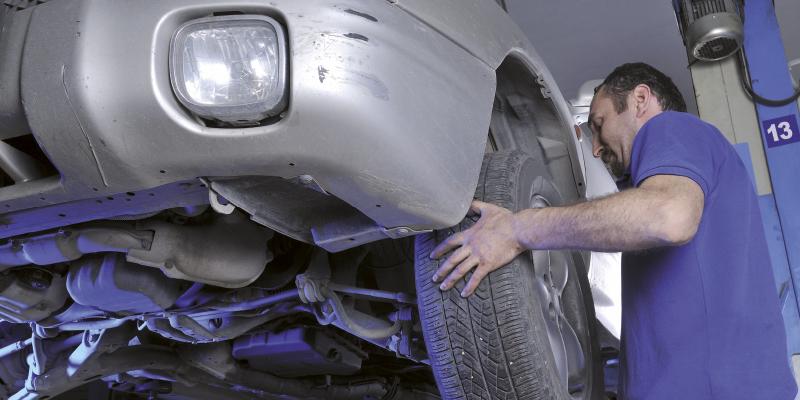NZTA is having an increased focus on it’s regulatory role including a recent $45 million injection of funding. This follows a series of events around truck towbar certification, CoF’s and WoF failure including a death that was linked to an incorrectly assessed WoF. There has been an alarming rise of heavy vehicle Certificate of Fitness revokes recently, with 3186 from December 2018 to November to add to 2,000 the previous year. As well, 71,000 warnings were issued to vehicle owners over potential safety issues related to WoF’s issued by a suspended garage.
These issues lead to the Ministry of Transport commissioning an independent a review by Martin Jenkins & Associates, which concluded that “there were significant deficiencies in the NZTA’s regulatory capability and approach that, over time, have led to regulatory failure within the Agency.”
Most of the NZTA board and some of the management has been replaced over the last 12 months.
This is likely to result in a heavier compliance checking for WoF issuers, with the NZTA’s new philosophy being that organisations that are licensed to provide NZTA’s regulatory services such as WoF’s are not customers, but that these are commercial businesses that seek to make profit while issuing permissions on NZTA’s behalf. This is a privilege that they have been afforded by the Agency. NZTA’s role is to audit their reliability, remedy their shortcomings, and where necessary revoke their permission in the interests of the public. So expect more of a policing approach going forward.
To some extent this is already happening, with strong guidelines around the time required for a WoF check and the number an inspector can issue in a day.
While researching this story we also engaged with workshops on how they have found the 12-month warrant of fitness term.
We discovered a number of one-time WoF issuing shops elected to relinquish their WoF testing ability soon after the new WoF structure was announced.
This was basically because the idea of implementing a 12-month WoF and the resulting inspections from NZTA, plus the anticipated loss of revenue, put the whole thing into the ‘too hard’ basket.
Of course, for those shops who took it all on the chin, the reduction in competition worked a little in their favour, but only a little.
It has also allowed NZTA to tighten up on those WoF issuers who shouldn’t really be in business.
In saying that, the ‘Cowboy element’ always seems to survive, regardless of industry or regulatory authority.
From the consumer’s viewpoint and based on what we’ve been told and assumed anyway, four years after its implementation, the one-year WoF structure is great.
Workshops we have spoken to all report the same constant: the customers have really taken a shine to coming in once a year, rather than every six months.
From the WoF issuer’s perspective, is it the same story? Is everything rosy with the once-a-year WoF?
We’ve had one workshop comment that it’s only this year that profitability has started to come right.
When the programme was first implemented, it caused a fair amount of havoc with the shop’s day-to-day revenue.
Customers would come in on the 12-month WoF and be told their repair bill for work required to get the WoF was considerably more expensive than they were prepared for.
Repair costs which could have been spread over six months between WoF’s, were now a one-hit spend, and – with low income customers especially, that was a pretty hard hit.
It was made worse by the fact that something that should have been fixed earlier had it been detected, was made worse with driving, resulting in a much higher repair bill.
In the case of this one shop, the resultant losses resulted in a technician being let go due to the reduced volume of work, and it has taken that particular shop three years to get back to some semblance of profitability.
Black mark NZTA, job losses are never a good thing and perhaps this is what was meant by the workshop owner’s comment that the roll-out of the once-a-year WoF was not especially well handled.
Another workshop owner of 30 years in business, Malcolm Keightley of Keightly Motors, was more philosophical about it:
“There’s little point in arguing whether the introduction of a once-a-year WoF was a good or bad thing,” he says. “The rules are made and – if you want to stay in business – you follow them, it’s that simple.”
Malcolm actually had quite a bit to lose.
His workshop is very large and has a dedicated WoF centre, which while it is used for other work, is advertised as a WoF centre and has been for some time.
When the once-a-year WoFs came in, there was probably more blue language than blue smoke from poorly tuned cars, since on the surface, the exercise looked like it was going to cause unnecessary disruption.
However, Malcolm got on board with the programme pretty sharply and while the first year knocked the business a bit financially, it has now stabilised.
“We don’t go looking for WoF work,” he explains, but we do have two inspectors on-hand and we might do six to eight WoFs daily, each taking about three quarters of an hour. No more than that. We could do more, but that’s a comfortable balance of regular work and WoF’s.
“I’m not a big fan of the once-a-year WoF’s,” Malcolm adds “but as far as implementation is concerned, NZTA is very helpful and very approachable. They want the programme to work and they’ll help you to make sure it does.”
Malcolm’s not a fan of the once-a-year WoF for all the right reasons.
We asked if he was upset with the loss of profitability; no.
Well, what about the administration?
Apparently, it’s no worse than it was.
What about the NZTA inspections?
Actually, they’re not the problem either; in fact, Malcolm speaks very highly of the inspections and the inspectors:
•
“They (the inspections) are unannounced, but if you’re running your business right, they’re not that big a problem.
•
“The better your shop and procedures are, the less of a hassle the inspections become.
•
“If you do have an issue, you have a month’s grace to clean it up, they reinspect and you’re golden. The inspectors will even help you resolve any problems.”
So, what’s the beef?
Malcolm – and others we spoke to – all seemed to belong to the same choir, certainly, they sang from the same hymn sheet.
The biggest issue was that some elements of WoF’s and car ownership aren’t up to one-year inspections – notably tyres and lights.
“Tyres are probably the worst” was the common theme from the responsible WoF issuers we spoke to.
A WoF has to be issued if the tyres on the vehicle meet the legal requirement of 1.5 mm tread depth.
If a tyre is at 1.7mm on the day of the inspection, it is still a pass and probably won’t be looked at until 12 months is up.
A lot can happen to a tyre in 12 months. It may travel 10 or 20,000kms and the next time it rolls in for a WoF, it may well have the cords showing through the canvas and steel bands hanging out all over it.
“But it will have passed – just barely – 12 months ago,” says Malcolm “and while we recommended strongly that the tyre be replaced back then, we couldn’t fail it, so the customer just drives on for the next 12 months on iffy tyres.”
From another garage: ‘’It’s quite scary what we see coming in.
“To be fair, the public don’t really know what to look for when it comes to tyres and it’s only when the car goes up on the hoist that we can show them.
“We issue the WoF, point out the tyres are borderline and then have the customer say, ‘Oh, I’ll change them the next time around.’”
Malcolm adds that lights are another issue.
“Back in our father’s day, a walkaround inspection before you went out for a drive was pretty much a given.
“Today, customers just get into their cars, turn the key/push the button and go, working on the theory that everything’s fine. Most are quite surprised at WoF time, to find out their tail-lights or brake lights are out.”
Next time you’re driving home, just count the number of lights you see not working. It’s quite astonishing and ironically, it’s not just the junkers.
Late model vehicles seem to be the worst, while conversely, older models which would have been victims of a scrappage scheme are actually pretty good when it comes to obvious potential WoF fails.
Perhaps the owners know they’ll be the first to be pulled in at a random WoF/Rego checkpoint and take a little more care.
The once-a-year WoF then, four years after implementation, is not the big deal everyone thought it would be.
The customers like it and the financials/profitability and workload of a WoF issuing garage can be adjusted to compensate.
The only real issue is getting the public to pay more attention to their vehicles themselves, because the six-month guardian angel has taken his/her car and headed off down the Celestial highway; with a 12-month WoF.






